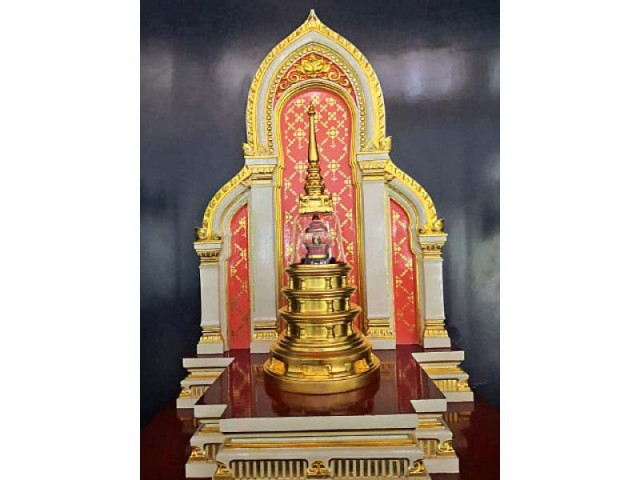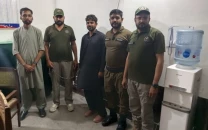Buddha relics on display at Taxila Museum
Official says Thai govt gifted special gallery with multiple security features to safeguard artifact

Taxila Museum authorities on Thursday put on display the holy bone relics of the Lord Buddha at a special gallery.
The gallery has a foolproof security system with bullet-proof glasses. The special gallery with multiple security and safety features was gifted by the Thai government as a token for the decade-old cultural and bilateral relations between the two countries.
Talking to the media on Thursday, Department of Archeology and Museum Deputy Director Muhammad Iqbal Manj said that since the inauguration of the Taxila Museum in 1928, the holy relic for the first time has been displayed in a separate gallery in a special glass one meter long glass.
He said that Thailand Ambassador Chakkrid Krachaiwong Boothamontham, Director-General of the Department of South Asia, Middle East and African Affairs of Thailand Muhammad LUsing Useng, Consul General of Thailand to Karachi and Aiyarat Kosakul First Secretary presented the glass gallery to the Taxila Museum.
Read: Man held for stealing Buddha statue
He said that with the state-of-the-art security features- the threat of theft of the holy relic was now out of the question.
He said that the holy relic of Lord Buddha was discovered in a silver casket containing a silver inscription. The inscription is written in the ancient Kharosthi script that was once common throughout Gandhara.
The inscription states that Urusaka of Noacha placed bone relics of the Buddha in his chapel at Dharmarajika. The excavation was carried out by the then Surveyor General of India Sir John Marshall during excavations carried out from 1912-16 in Taxila from Dharmarajika Stupa.
He said that this stupa is considered one of the eight largest Buddhist stupas in South Asia built around the holy relics of the Buddha by Maurya Emperor Ashoka in the 3rd century BC.
The deputy director said that this stupa was built to house small bone fragments of the Buddha.
The stupa, along with the large monastic complex that later developed around it, forms part of the Ruins of Taxila - which were inscribed as a UNESCO World Heritage Site in 1980.
Published in The Express Tribune, March 25th, 2022.



















COMMENTS
Comments are moderated and generally will be posted if they are on-topic and not abusive.
For more information, please see our Comments FAQ